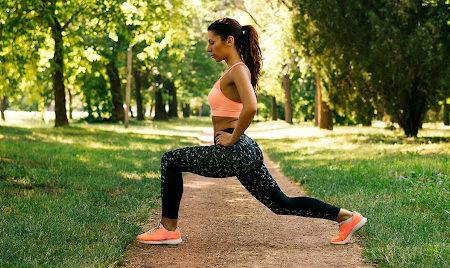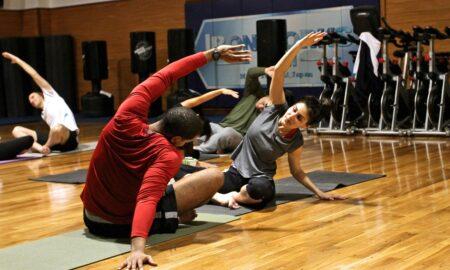Is it necessary to keep dieting after you reach peak condition? It’s not a bad idea to stay on a reasonable diet, but it’s often difficult to continue the extreme deprivation you have to endure to get in shape. I’m talking about the kind of condition you need to be in for a bodybuilding competition. The day after the ’75 Mr. Olympia in South Africa, the guy who won the Mr. Universe title gained more than 25 pounds by eating and drinking everything in sight. Needless to say, he didn’t look the same after that. I’ve also fallen from grace after a competition by maxing out on carbs. All that hard work and fine definition disappeared in as little as one week, and although I was a little bigger and stronger, I was a lot smoother.
How I ate after competition seemed to be related to whether I won or lost the contest. After winning, I always had a tendency to rest on my laurels and celebrate. The challenge was knowing when to stop the celebration and get back down to business. Most bodybuilders just keep eating and gaining weight, bulking up to grow bigger and stronger before trimming down for their next competition. I remember the ’76 Mr. Olympia, which was between Franco Columbu and me. Many felt I should have won, but Franco slid by me, and second place left me with a desire to keep training and dieting because we were both doing posing exhibitions in New York’s Madison Square Garden two weeks later. I trained hard, kept dieting strictly and showed up even more muscular than I’d been for the Olympia (although a little leaner), whereas Franco took the typical route of easing up and relaxing after victory. He disappeared when the promoters asked him to pose onstage with me, and I don’t blame him.
That’s the only time I can remember not easing up on my diet after peaking. At the banquet after the Olympia that year I allowed myself a sandwich and two beers, and that was it. Seems the only way I’ve been able to stay strict is when I’ve still got something to prove.
The fact is that after you reach your goal, you’ve got to relax and enjoy your training and eating. Just don’t go overboard. It always helped if I had posing exhibitions or photo sessions scheduled after a competition was over’that gave me a reason to stay in reasonable shape. But no matter how motivated I was, after a competition I always had the temptation to loosen up, especially during the period between Thanksgiving and New Year’s. It’s easy to rationalize poor diet if you tell yourself you’re bulking up. I’ve done that on numerous occasions, and the bottom line is that I always got into better shape when I didn’t gain more than 5 percent over my competitive weight. For me that meant not going over 200 pounds. Now, at age 60, that figure is more like 180. I don’t bulk up anymore because after I trim down, it seems that I’m back where I started.
In my column last month I outlined my get-in-shape diet: keeping protein intake around one gram per pound of bodyweight, fats at 25 percent of total calories and carbs under half my daily protein intake for three days in a row, then increasing carbs to equal protein on the fourth day to replenish glycogen stores. After I reach my physical goal of peak condition for the year (I try to do that every year, with my target date being early autumn), I simply increase my carbohydrates to equal my daily protein. If I’m eating 180 grams of protein, my carbs stay at 180 grams every day. That gives me enough energy to train hard and get a good pump and allows me to indulge in meals I avoided when dieting for peak condition. For example, I add a slice of whole-grain sprouted-flaxseed toast to my soft-boiled-egg breakfast and occasionally have a pasta meal (but not past 5 p.m.) or a baked potato. I try to include carbohydrates with low-to-moderate glycemic-index ratings; e.g., thick-flaked oatmeal and baked yams. And occasionally I’ll have a small amount of ice cream. No pastries, candy, dried fruit, fruit juice or soft drinks because their glycemic indexes are too high. The most I’ll increase my carbs is one-third higher than my protein, but never for more than one day at a time. The added carbs give me more energy, and although I do put on some bodyfat, I feel more like working out and even doing a little more on the treadmill.
My fat intake might increase a little too, but not by a lot. A small amount of butter sure tastes good on my whole-grain toast in the morning along with three soft-boiled eggs, a slice of cheese and one-third of an avocado. It keeps me from getting too hungry as the morning progresses.
So experiment with how you eat. Try keeping a food journal, writing down everything you eat, and at the end of the day look up the amount of protein, carbs and fats you’ve eaten in a handy reference guide like Dr. Atkins’ New Carbohydrate Gram Counter ($4.95 at bookstores). Use common sense and moderation to ensure your success.
Editor’s note: Frank Zane is available for personal training and consultation. Visit www.FrankZane.com for details, or phone 1-800-323-7537. IM




















You must be logged in to post a comment Login